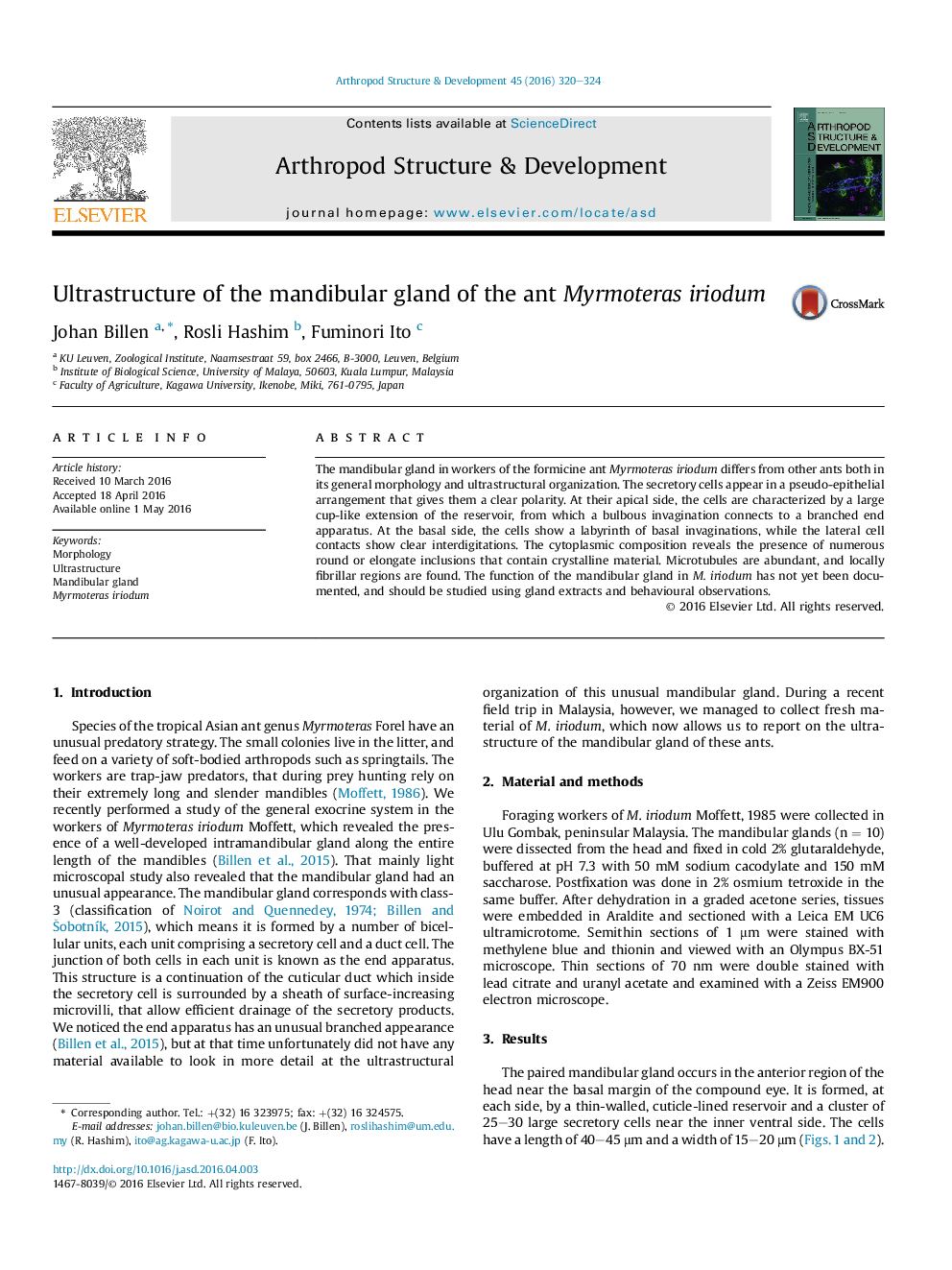| Article ID | Journal | Published Year | Pages | File Type |
|---|---|---|---|---|
| 2778477 | Arthropod Structure & Development | 2016 | 5 Pages |
•Unusual mandibular gland structure among ants.•Wasp-like branched appearance of end apparatus.•Pseudo-epithelial arrangement of class-3 secretory cells.
The mandibular gland in workers of the formicine ant Myrmoteras iriodum differs from other ants both in its general morphology and ultrastructural organization. The secretory cells appear in a pseudo-epithelial arrangement that gives them a clear polarity. At their apical side, the cells are characterized by a large cup-like extension of the reservoir, from which a bulbous invagination connects to a branched end apparatus. At the basal side, the cells show a labyrinth of basal invaginations, while the lateral cell contacts show clear interdigitations. The cytoplasmic composition reveals the presence of numerous round or elongate inclusions that contain crystalline material. Microtubules are abundant, and locally fibrillar regions are found. The function of the mandibular gland in M. iriodum has not yet been documented, and should be studied using gland extracts and behavioural observations.
